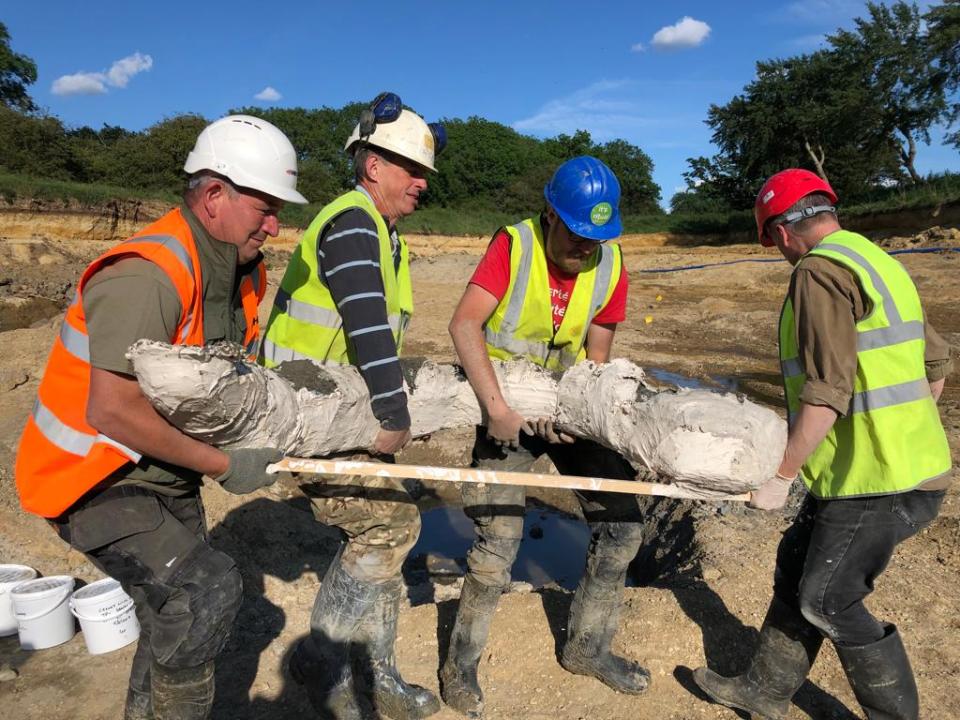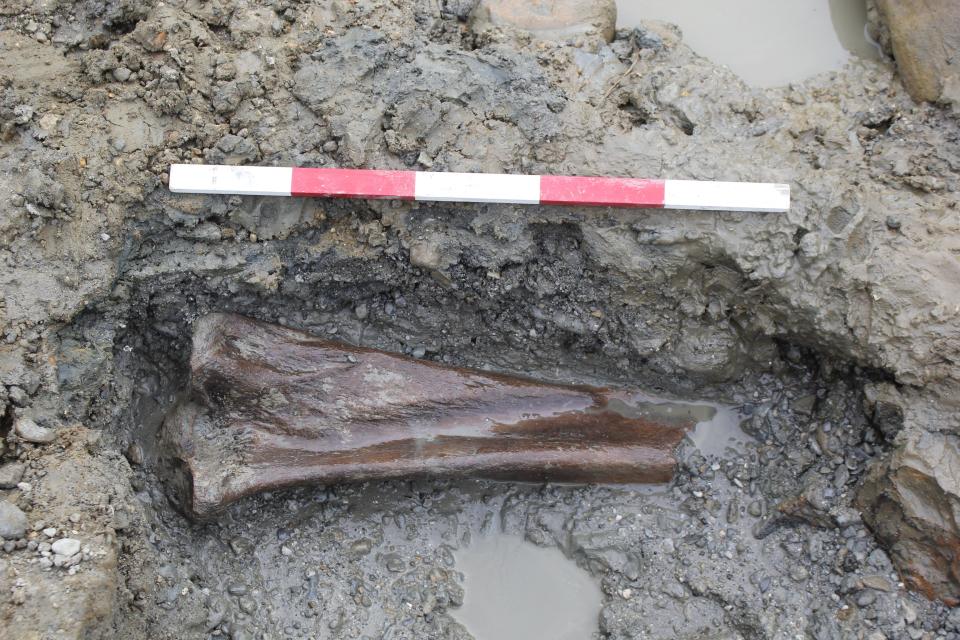Archeologists unearth 'mammoth graveyard' alongside Neanderthal tools in Britain
Archeologists in Britain have unearthed a "mammoth graveyard," in what they are calling Britain's "most significant Ice Age discovery in recent years."
The discovery was made in the town of Swindon, over 100 miles west of London. Archeologists from the organization DigVentures found the fossils after two group members noticed a Neanderthal hand axe on the ground in 2017.
Over the course of 2019-20, DigVentures crew members excavated the site and found mammoth tusks, leg bones, ribs and vertebrae belonging to two adult, two child and one infant mammoths, all at least 200,000 years old.
Other animal fossils found include beetle wings, shells of freshwater snails, bison and brown bears, alongside plant fossils that show what the environment was like over 200,000 years ago.

Aside from the hand axe, another Neanderthal tool known as a "scraper," which was used to clean animal hides, was found.
Lisa Westcott Wilkins, co-founder of DigVentures, called the discovery "exceptional" because of how well preserved all the fossils were found. The fossils are estimated to be around 210,000-220,000 years old, when modern humans began to appear in Europe in the Ice Age.
"Words can’t quite capture the thrill of seeing a mammoth tusk still in the ground, or the feeling of standing in the middle of a site that has the potential to change how we see our closest human relatives and the Ice Age megafauna they shared their world with," Wilkins said in a statement.

After examining the mammoth fossils, archeologists say they come from a species known as the Steppe mammoth. An ancestor of the woolly mammoth, the fossils of the Steppe mammoths were smaller than previously found fossils, indicating the species may have been shrinking because of colder temperatures.
Duncan Wilson, CEO of the government-operated organization Historic England, said the discovery also provides insight on how early humans dealt with the changing climate. Currently, there is no evidence of human existence of Britain from 180,000-60,000 years ago because researchers believe Neanderthals left the area because of drops in temperature.

"This represents one of Britain’s most significant Ice Age discoveries in recent years." Wilson said. "The findings have enormous value for understanding the human occupation of Britain, and the delicate environmental evidence recovered will also help us understand it in the context of past climate change."
Archeologists are unsure of why all the fossils were found at one site, but they plan to do further research at the location to see if Neanderthals had butchered these animals for food or other uses. The findings will also be part of a BBC documentary, "Attenborough and the Mammoth Graveyard," set to air on Dec. 30.
Follow Jordan Mendoza on Twitter: @jordan_mendoza5.
This article originally appeared on USA TODAY: Archeologists find 'mammoth graveyard,' Neanderthal tools in Britain

